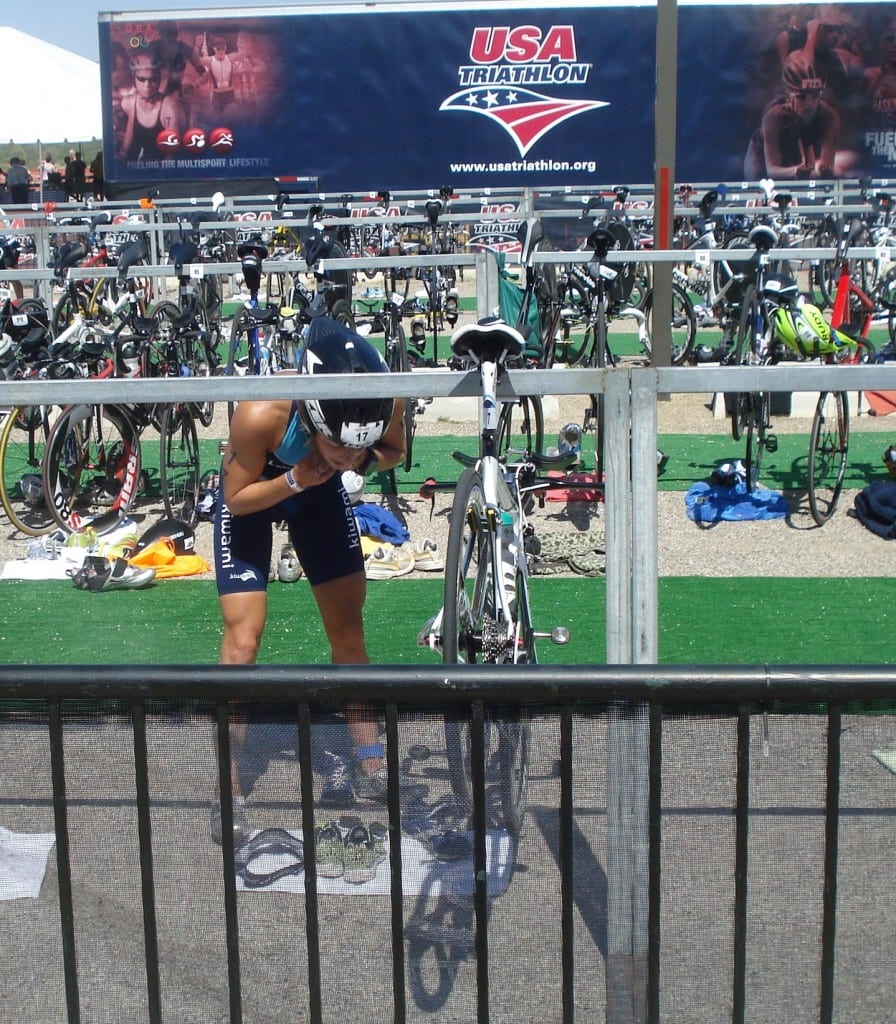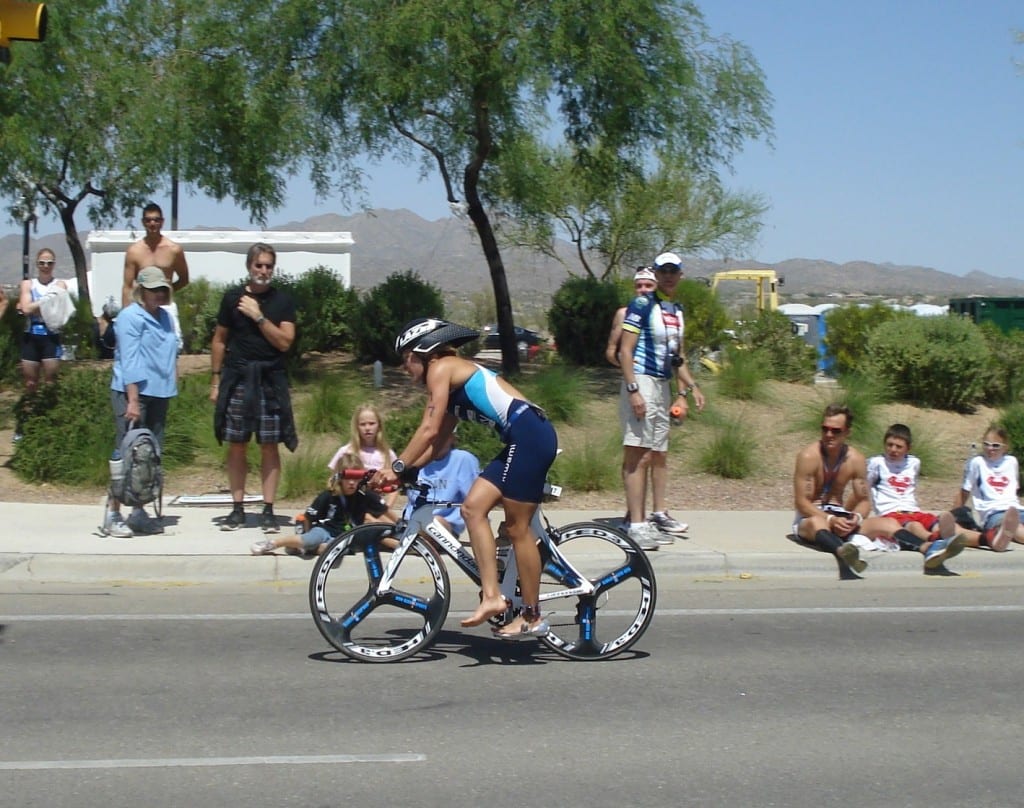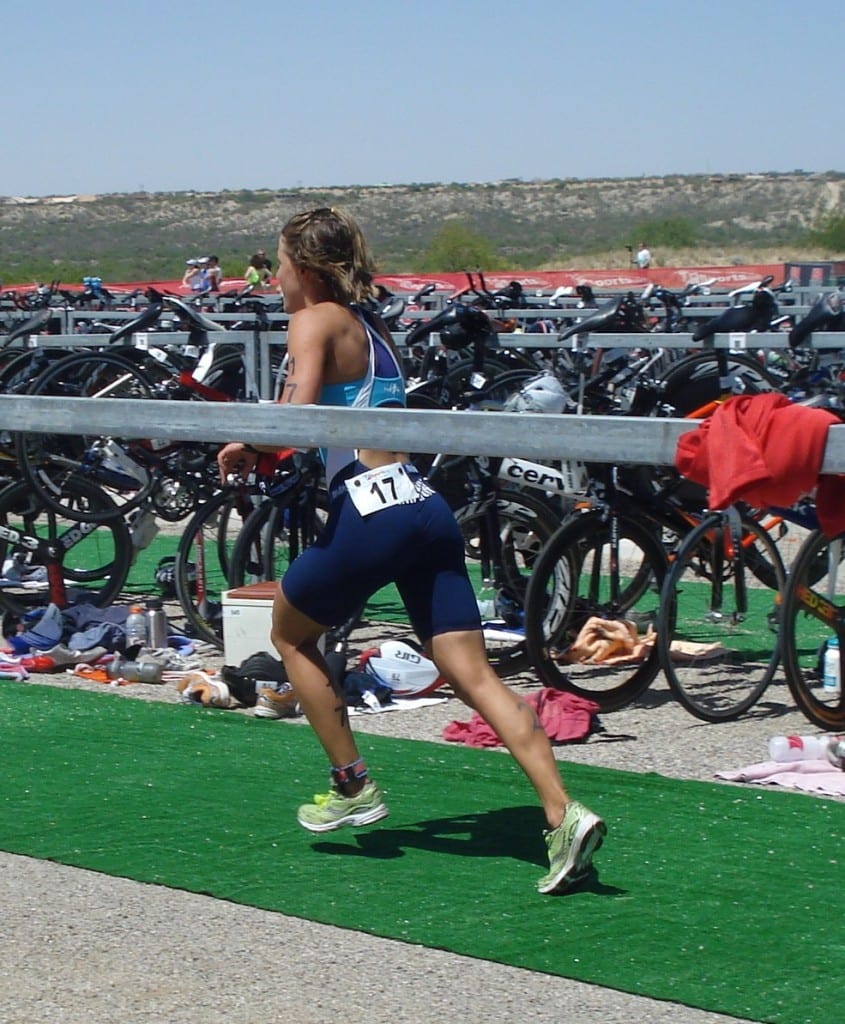No products in the cart.
Uncategorized
The 4th Sport in Triathlon…
Guest post from Angi Axmann – Professional Triathlete (proudly sponsored by Skin Strong)
20 female athletes finished within a minute of each other at the recent ITU World Cup in London, the first qualifying race for the Olympic games in 2012. Some athlete’s swim, bike and run times were within two seconds of each other, but what differentiated them by one spot was their transition time. There were gaps of 15 seconds in transition, now multiply that by 2 and you can have a difference of 30 seconds in this Olympic distance race.
I see even more of a difference in Ironman racing, off course, since there is a lot more to do in transition. But sometimes I notice transition times of 10-15 minutes. Imagine if you could get going in less then 5 minutes; if your transition usually takes 10-15 minutes and you cut it down to 5 you could be saving up to 20 minutes in an Ironman race.
Here are some tips of how to get ready for a fast and clean transition:
– Get oriented.
Know where you will enter transition coming from the swim and where you go out on the bike
Know where you will enter transition coming from the bike and where you go out on the run
Know where your bike is located and try to remember “landmarks” like balloons or trees or even a bright colored bike in your row
I am guilty of making this mistake and learned from it: In one of my first triathlons I ran by my bike and wasn’t sure where I had “parked” it. I ran back and forth and finally found it, but I wasted a lot of time. I learned from this mistake and now I am always counting rows, getting oriented and look for bright landmarks around my bike.
– Keep it simple.
Try to have the least amount of things in your transition
Have everything unbuckeled and open for “easy access”
I see a lot of athletes who have A LOT of things in their transition. Including a lot of things they don’t need. If you have less things in your area you don’t have to search and think a lot while transitioning, which will safe you time. Try to keep my transition area clean and clear of clutter.
-Necessities before race to help with transition:
Race day morning, you can do a few things before getting to the race to save time in transition! You can apply SLATHER to the saddle area before putting on your tri suit – it will last through the swim and save time in transition. You can use SLIK under your wetsuit, not only will you not get the chafing around your neck, your wetsuit will come off quickly (another few minutes saved).
Necessities in transition:
- Bike: with my gears adjusted to the first hundred meters of the race course (uphill means lower gear, downhill / flat means higher gear) and my pedals parallel to the ground (I jump on my bike from the left side, so my right pedal is always in front, so when I get on I can push immediately).
- Towel: I lay a towel under all my stuff, so that I can, if I need it, wipe my feet quickly to get rid of dirt and small rocks under my feet.
- Number belt: unbuckeled and open. No worries initially on what direction your number is facing.
- Cycling shoes: with the velcro open. I practice getting in my shoes at least once before the race to make sure I opened them wide enough.
- Helmet: unbuckelt, with the straps untangled
- Glasses: already opened up, lying in my helmet.
- Nutrition: I tape the majority of my gels on my frame, right behind the stem. The gels for the run are next to my running shoes so that I can grab them as I go.
- Running shoes: untied and again tested before race start to make sure they are open wide enough. I use speedy pull close lazes for a quick transition. Spray the inside of your shoes with SLIK to get into your shoes quickly, you can skip using socks, and no blisters!
- Visor or hat: if sunny or rainy.
- SLIK: A quick spray (thighs, under arms, etc.)before the run can make your run and recovery much nicer!
Double checking before the race starts is very important. I set everything out, then go over it in my head: I will come out of the water, rip off my cap and goggles during the run to transition and strip my wetsuit halfway down during the run. While running into transition I will try to spot my bike, stop right in front of it take my wetsuit off completely (and leave it right there on the ground, off course in “my area”). Put my race belt on, grab my glasses, next my helmet and buckle it. Get into my shoes, grab my bike and GO.
I run out of transition holding my bike by my handlebars rather then by my seat. That allows me to stay in control over my bike and do a flying mount while running out of transition with my hands already on my brakes/shifters.
I am off ready to rock the bike, ripping my gels off my frame whenever I need to. I eat one gel right before I get back from the ride, because to me it is easier eating on the bike then it is on the run and that way I am well fueled for the run.
When I get close to T2 (about 1 mile out) I will open my velcro on my shoes and put my bare feet on top of my shoes, so that my dismount is fast and I can start running barefoot into T2
I will rack my bike, unbuckle my helmet and get into my running shoes. I grab the visor/hat and gels and get organized while I run out of T2. No time wasted. There is no need to stand there putting the hat on, I might as well run while I put it on. Seconds saved.
I hope that this intro to transitioning helped a little. If you have further questions about transitions or triathlon in general, please email me at [email protected]




